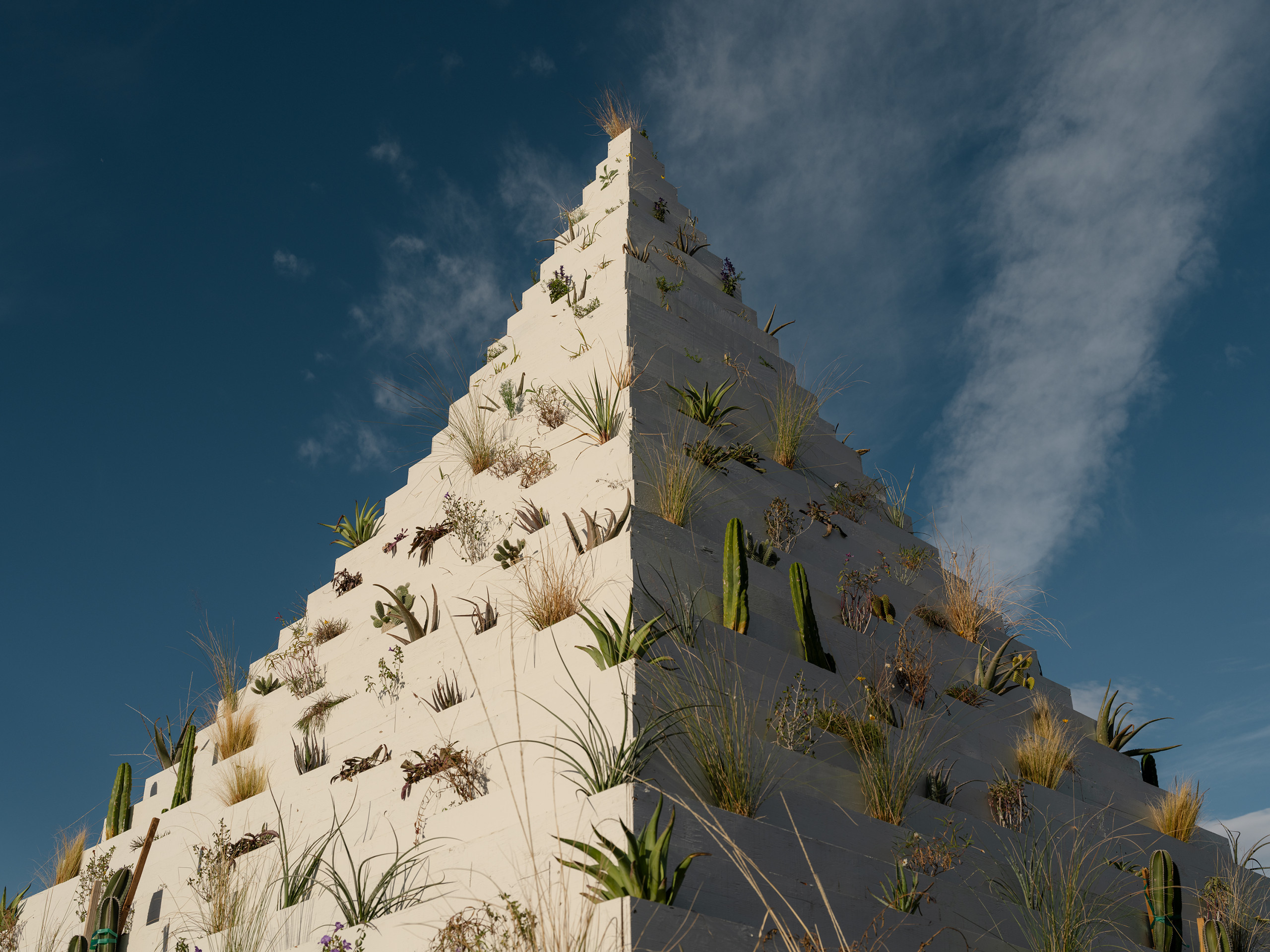Desert X 2025 is closed. This installation is no longer on view.
Agnes Denes
The Living Pyramid
b. Budapest, Hungary, 1931
Based in New York City, USA
The Living Pyramid
33.780500, -116.406167
Sunnylands Center & Gardens
Rancho Mirage, California, USA
Opening Hours:
Wednesday – Sunday: 8:30 am – 4:00 pm
The Living Pyramid is both a monumental sculpture and an environmental intervention by pioneering artist and activist Agnes Denes. Commissioned as part of Desert X 2025, the work unites Denes’ powerful public landworks with her ongoing exploration of the pyramid—a form that has been central to the artist’s practice throughout a career spanning more than half a century. For Denes, who was born in Budapest in 1931 and lived in New York since 1954, “art exists in a dynamic, evolutionary world where objects are processes and forms are dynamic patterns, where measure and concepts are relative and reality itself is forever changing.” The Living Pyramid bears witness to this. The form is hierarchical, echoing the idea of Sunnylands as the Camp David of the American West—a place where political and thought leaders from across the globe have convened “to promote world peace and facilitate international agreement.” At the same time, it is constantly changing. Planted with vegetation that is native to the region, its structure and appearance transform in lockstep with the slow growth cycles of the desert environment. Over six months, the plants will sprout and bloom. Some will go to seed, and some will die. For Denes, this process serves as evidence of the organic development of nature as it interacts with the pyramid, one of the most iconic forms of human civilization.
“While the pyramids are based on mathematics, and thus achieve a kind of perfection, they contain all the imperfections they are dealing with or are representing and visualizing,” Denes says. Activated through educational programs promoting environmental awareness and conservation, the tiers of The Living Pyramid extend beyond visible structure and in effect become a social construct that cultivates a microsociety of people responsible for its construction, planting, and ongoing care.
The artist and Desert X would like to thank the following for their generous support in making this project possible: National Endowment for the Arts and Sunnylands Center & Gardens.



